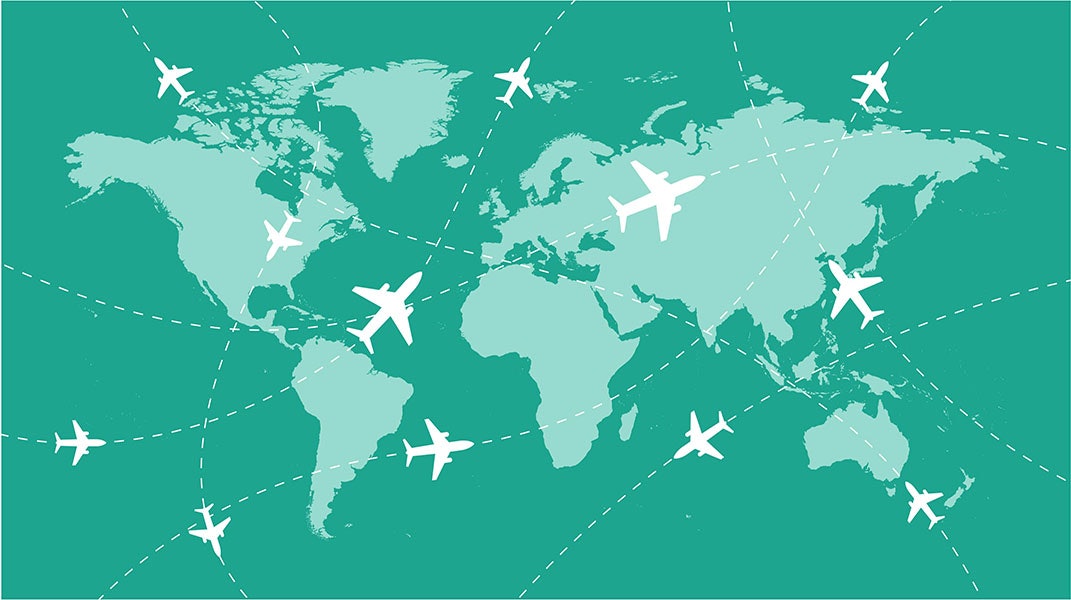What's the deal with carbon offsets?

Over the summer of 2017, Swedish singer Staffan Lindberg started looking to do something about his carbon footprint. He pledged to stop flying, an easy way to slash his environmental impact by a large amount in a short period of time. Lindberg also coined the term “flygskam” to describe the feeling of climate-related guilt caused by traveling by air.
The good news is that there’s no dearth of innovation in the world of carbon offsets.
Since it was popularized by Greta Thunberg, an environmental activist from the same country credited with launching mass climate walkouts across the world, the term has become common parlance. Thunberg has challenged Swedish citizens to find alternatives to flying, and many are following through: An estimated one in four Swedes opted not to fly at all last year, while the number of passengers who flew through Swedish airports dropped by 4 percent in the same period.
But many are unwilling or unable to curb their flying habits. For those who fall into this camp, there are carbon offsets: a credit purchased to compensate for the volume of carbon that one seat on a plane releases into the atmosphere while in the air for a specific period of time. This money often goes to planting trees, developing clean energy to displace fossil fuels, or other activities that sequester or reduce carbon in the atmosphere.
Carbon offsets are complicated...
Seems simple enough, right? Well, in practice, purchasing carbon offsets isn’t quite the one-for-one exchange it’s made out to be.
- For starters, calculating emissions-for-offset is tricky, and it’s easy for offset providers to get it wrong.
- The offset industry is also riddled with logistical problems and is not well regulated. Following an offset payment from wallet to tree is hard, which means many consumers purchase offsets only for their money to seemingly disappear into the void.
- Some offsets also go to environmental endeavors that are already taking place -- such as forests that are already being preserved -- rendering the purchase virtually useless.
- Many environmentalists argue that purchasing offsets is simply not enough to curb climate change; the UN Environment Programme says offsets are not a “get-out-of-jail-free” card for flight shame, but must be coupled with other tangible forms of environmental action.
...but start-ups are taking on the challenge
The good news is that there’s no dearth of innovation in the world of carbon offsets. Seattle-based start-up Nori, which launched in 2019, is the first ever “carbon removal marketplace” that uses blockchain technology to verify that purchases of carbon offsets end up exactly where the consumer wants them to. It works closely with its partner organizations to confirm when carbon has been removed from the atmosphere, and issues consumers a Carbon Removal Certificate (CRC) for every ton of CO2 their offset purchase sequesters. Every CRC can be exchanged for a Nori token, a cryptocurrency that can be redeemed for cash or used with merchants who accept them.
Nori uses blockchain technology to ensure transparency for consumers and keep track of carbon removals and their location. This ensures that a removal cannot be sold multiple times -- each removal is “retired” once a consumer purchases it.
Other start-ups target offsets on a smaller scale. Wren is a subscription service that monitors users’ transportation, diet, services, and energy usage and calculates their monthly carbon footprint accordingly. The app automatically purchases credits for users to offset the emissions from their daily activities and charges a monthly fee according to footprint size (the average user pays $21 per month). Wren partners with three credible organizations that plant new trees and protect existing trees that are under attack, such as those at risk of being cleared in the Amazonian rainforest. Just two months after launching in June 2019, the service had already garnered 500 users, a testament to consumers’ willingness to put their money where their mouths are on climate action.
Consumers willing to put in a little legwork can also verify where their offsets go themselves. Accreditation bodies such as Gold Standard, a David Suzuki Foundation-endorsed organization that strives to maximize “every dollar of climate and development funding,” have verified a number of offset providers based on “additionality,” or whether the offset goes to an additional project that wouldn’t exist otherwise.
So, if your next work trip has your flygskam flaring up and you have no choice but to fly, you still have options. Look up the offset organization your airline of choice has partnered with, or offset your emissions in other micro-level ways. Just remember that you’re not stuck with the footprint you’re given.
